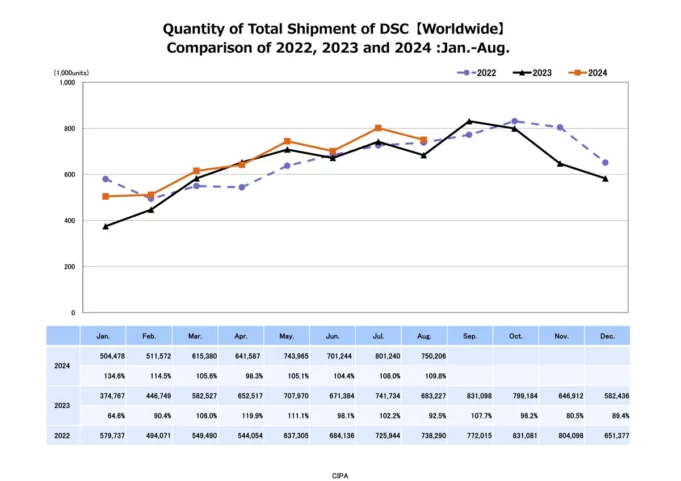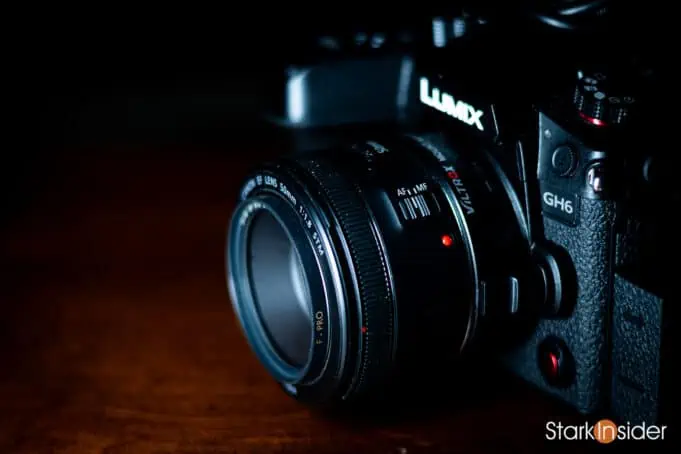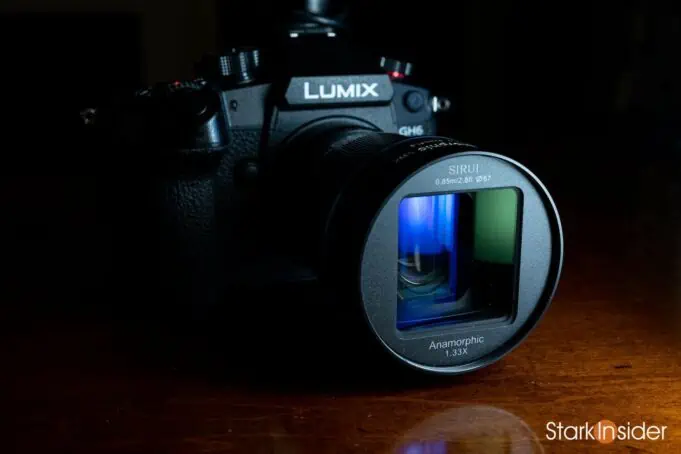Another report, another not so surprising result.
Via Digital Camera World, sales data for August 2024 has been released by trade body CIPA (Camera Imaging Products Association) which show that the decline in DSLR camera bodies continues.
In aggregate about 750,000 cameras were shipped during the month with the breakdown as follows:
- 511,530 mirrorless (68%)
- 91,344 DSLR (12%)
- 147,342 Build-in lens (20%)
Clearly, mirrorless bodies have come on strong over recent years. No surprise there. Their smaller sizes, modern sensor design and lack of mechanical shutter make for a better overall user experience.
The data includes sales and shipment data from established camera companies such as Canon, Fujfilm, Nikon, Panasonic, Sigma, Sony, Tokina, and Zeiss, among several other Japanese players.
You can see more trend data below from CIPA for the 2022-2024 timeframe for the overall DSC market (Digital Stills Camera):

Per Digital Camera World, CIPA has updated its overall predicted shipments for 2024 as follows:
- 5.89M ILE (Interchangeable Lens) bodies including both DSLR and mirrorless
- 1.52M compact cameras
- 9.57 lenses
Only Japanese companies are included in the report.
Camera Market: Nothing To See Here

Net-net: there’s not much really new to glean from this data. Things are moving as expected, and not much is really changing. DSLR continues to fade. Mirrorless continues to take up most of that slack. And smartphone cameras continue to impact the overall DSC market, albeit perhaps at a slowing rate in the last few years.
For those looking to invest in camera gear, either for paying jobs (weddings, corporate, commercial, etc.) or even just as hobbyists, my advice remains the same: marry your lenses, date your camera bodies.
That well worn expression is as true today as ever. Camera bodies include lots of tech. And that stuff ages quickly. Whereas, lenses typically have less tech and electronics to worry about, with most of the development and expense going into the glass itself. Good glass, generally, never goes out of style, and you’ll be able to use it from body to the next over the years. Of course, mounts do change. For instance, Canon made the move from the storied EF/EF-S mount to RF with the advent of its mirrorless (R-range) cameras. However, adapters can easily enable older EF glass to work on the RF mount so that’s really not much of a problem.
RELATED:
Blackmagic PYXIS 6K cinema camera now makes sense, thanks to new accessory
With some offloading older DSLR and mirrorless gear in favor of exclusively shooting on iPhones or Androids should mean plenty of deals out there for those who still love (or need!) the ability to shoot with highly flexible, dedicated camera bodies that can be rigged in all sorts of manner to accomplish shots for just about any project.


